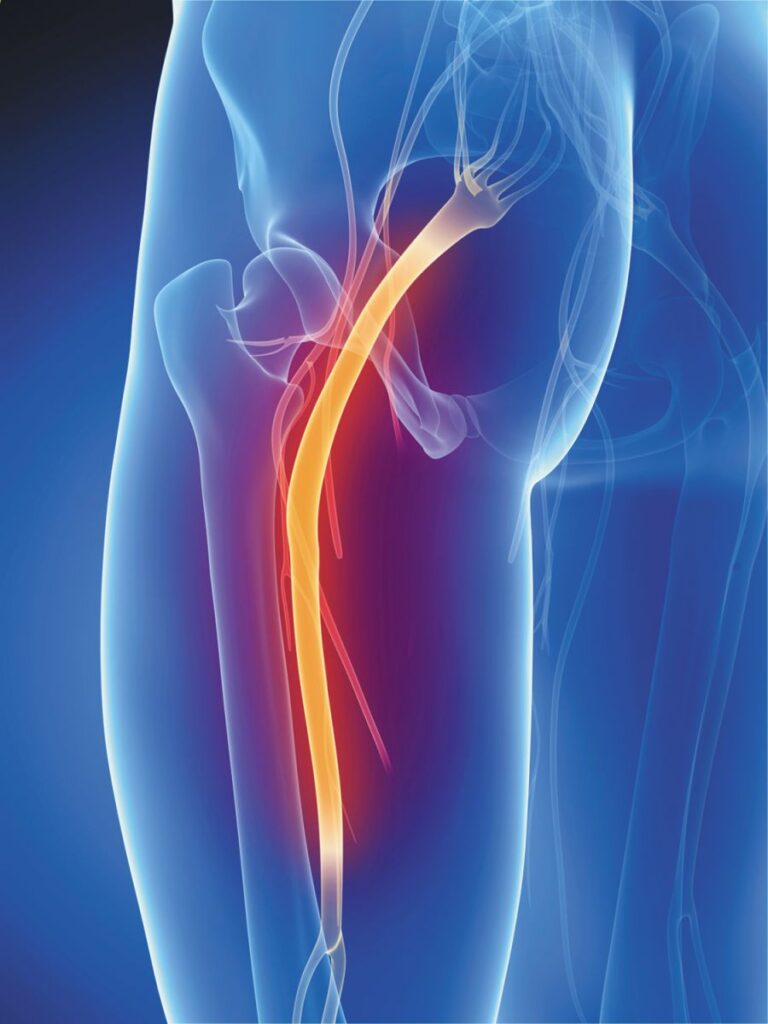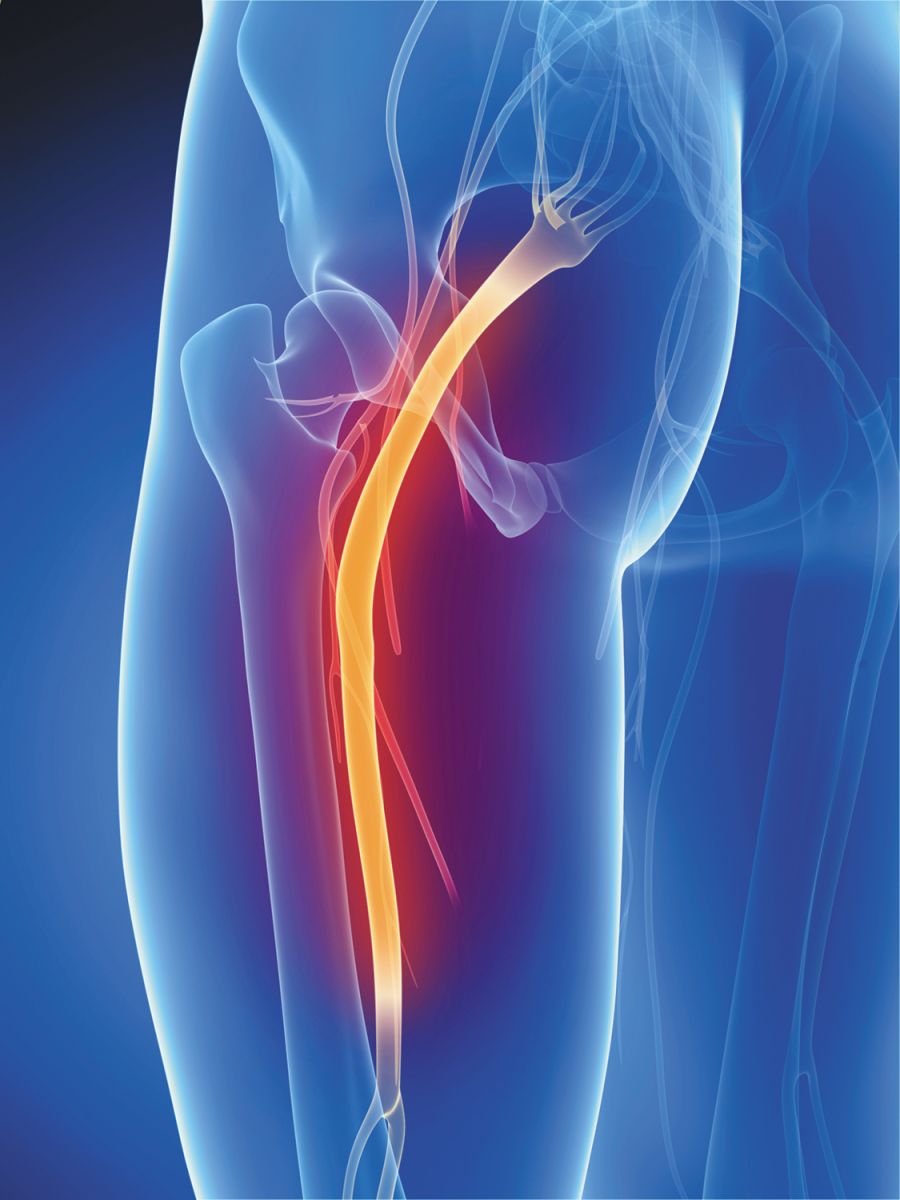
As you might know, sciatica is a pain caused by the compression of the sciatic nerve. The sciatic nerve goes from the lower part of the back down into the thighs and the sides of your legs.
When irritation, injury, or compression of this nerve occurs (it can also be caused by overused or injured muscles) you will experience sharp or throbbing pain that radiates down the leg and can also cause numbness or tingling. While it sometimes is nothing more than a mild pain that does not influence your life that much, it can be a chronic condition that causes significant pain and will greatly influence your daily life and ability to do normal things.
When you are experiencing regular pain, it can be hard to perform physical activity and you might be afraid of making the pain worse. However, there is evidence to suggest that yoga might be able to help relieve symptoms and potentially improve your pain overall in the long run. Here are three yoga poses that might help to relieve sciatica pain:
- Child’s Pose (Balasana)
This pose is helpful for tuning into your body, feeling out where the pain and stiffness are located in the body. It also helps to stretch your spine, increase flexibility, and open your lower back and thighs.
Directions:Beginning on your hands and knees, keep your knees together and lower your hips backwards so that your buttocks areon resting comfortably on your heels. Stretch your arms out in front of you on the mat and allow your body to relax completely. (This move can be adjusted as you feel comfortable, e.g. keep your arms resting at your sides facing backwards or moving your knees out to the corners of the mat).
- Cobra Pose (Bhujangasana)
The cobra pose is another fantastic pose for your spine, helping to promote circulation throughout your body.
Directions: Lie flat on the mat on your stomach and place your hands directly under your shoulders. Maintain your elbows in close to your body and slowly lift your head, shoulders, and chest. Make sure to engage your lower body. Maintain the pose for 30 seconds before gently lowering your body back down.
- Legs Up The Wall (Viparita Karani)
This pose helps in relaxation and recovery, improving circulation and allowing the body to recuperate.
Directions:Lie back on your back on a mat. Make sure that your legs carefully raised against the wall so that they are at a 90-degree angle. Cushion your head with a pillow or blanket if you would like. This position is based around comfort and relaxation. Let your entire body relax and allow it to sink down and feel heavy. Stay in this position for as long as is comfortable (up to 20 minutes).
While it may seem to be counterproductive, exercise is usually better for relieving sciatic pain as opposed to bed rest. Patients may rest for a number of days after sciatic pain flares up however, after that period of time, inactivity will usually result in that pain becoming worse.
Without exercise as well as movement, the back muscles – in addition to the spinal structures – become deconditioned and less capable of supporting the back. The deconditioning and weakening can result in back injury and strain, which further results in additional pain. As well, active exercise is also important for the health of the spinal discs. Movement helps to exchange nutrients and fluids within the discs in order to keep them healthy as well as prevent pressure on the sciatic nerve.
By regularly practising simple and careful yoga poses, you can improve the flexibility of your body, build muscle strength, and increase relaxation. With regular practice you can improve your body’s overall health and fitness and this may help to improve or relieve sciatica pain symptoms.
